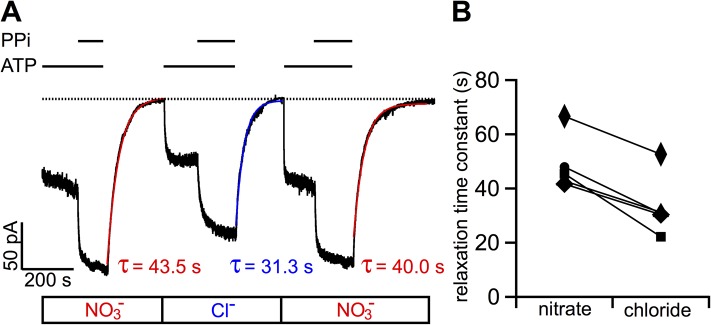Figure 4.
NO3− prolongs the relaxation time constant of WT-CFTR channels locked in an open state by ATP plus PPi. (A) A continuous current recording of WT-CFTR channels demonstrating lengthening of the relaxation time by NO3−. Macroscopic CFTR currents were activated by PKA and 1 mM ATP to a steady state (not depicted), and then the application of 4 mM PPi in the continued presence of ATP resulted in further current rise as the channels were locked open by PPi. The resulting current decreased slowly after subsequent removal of ATP and PPi in NO3− bath, yielding a relaxation time constant (τrel) of 43.5 s. A similar protocol with bath Cl− performed in the same patch shows a much faster current decay upon washout of ATP and PPi (τrel = 31.3 s). Red line and blue line represent fits of the current decay with a single-exponential function. (B) Summary of the relaxation time constants for PPi locked-open CFTR channels. Because each pair of the time constants was obtained from experiments depicted in A, the shortening of τrel by Cl− in each patch is demonstrated by a straight line linking individual paired time constants.

